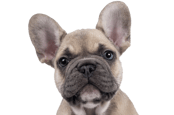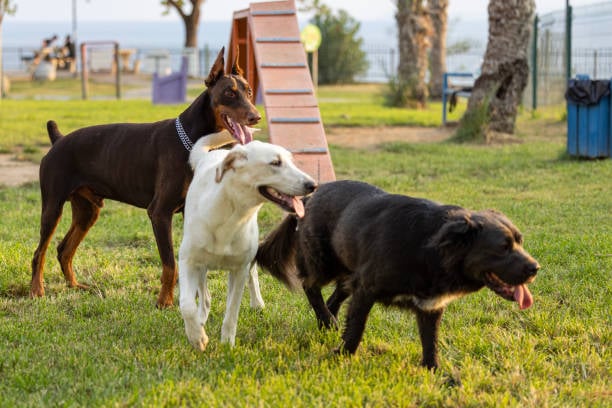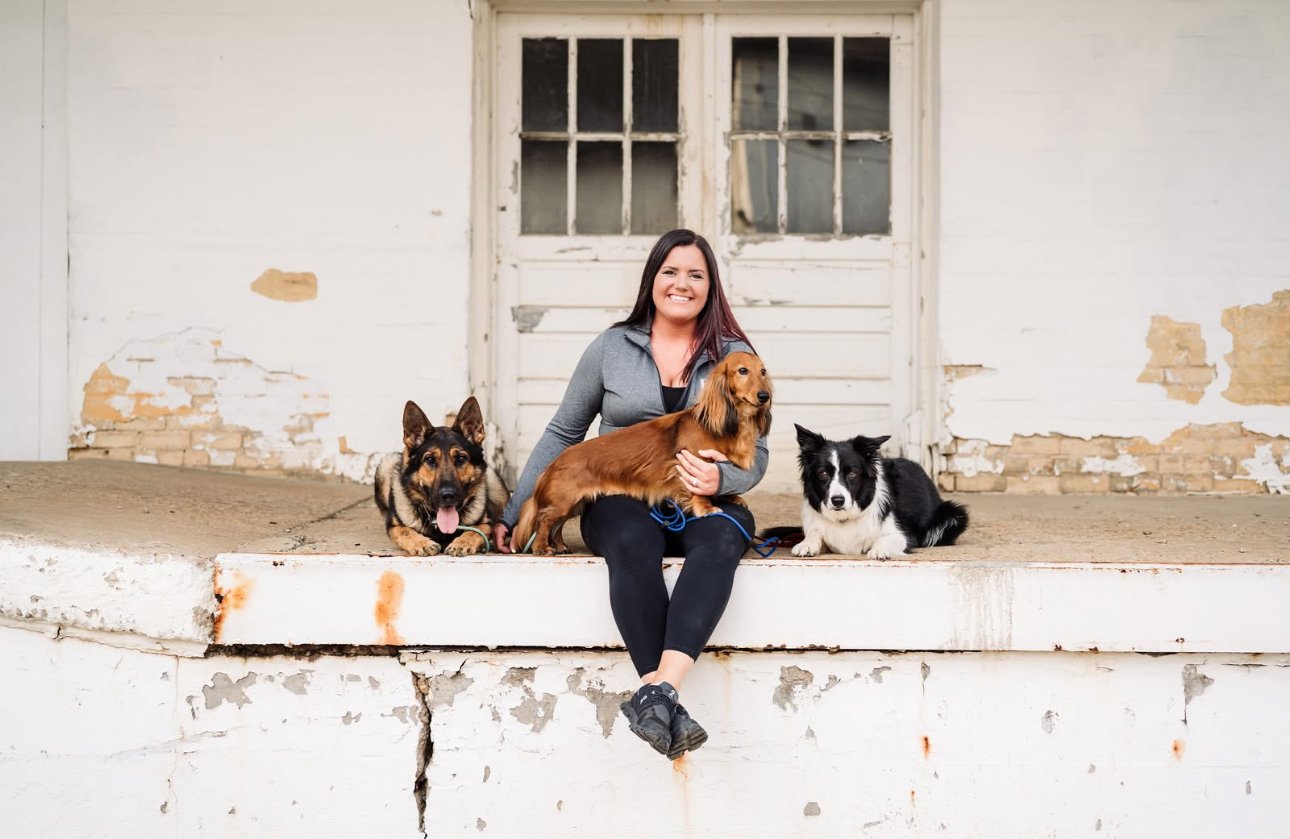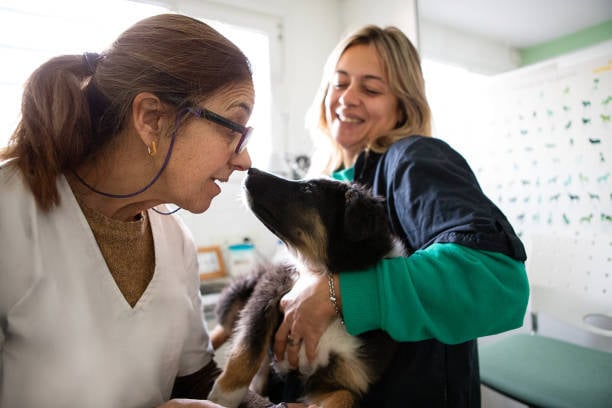Dogs Thrive with Mental Stimulation
Pet parents today expect more than just open play when considering the best daily schedule for dog daycare. They want to know their dog’s day included mental stimulation, social interaction, and relaxation. They’re looking for transparency, structure, and care that mirrors what they’d provide at home. A solid, well-thought-out daily schedule helps deliver just that.
A tired dog is a happy dog—but getting there takes more than just a bout of the zoomies. High-energy dogs thrive when their day is filled with a thoughtful mix of play, training, rest, and enrichment. These structured, engaging routines help dogs stay balanced and give pet parents peace of mind knowing their furry family members had a fulfilling, well-rounded day.
For dog daycare owners, structure isn’t just about keeping dogs calm—it’s about keeping your business chaos-free and your staff organized. A predictable flow helps manage dog behavior in groups safely, reduces stress on employees, and improves the overall experience for every dog (and human) involved.
The Best Daily Schedule for Dog Daycare Businesses
At Gingr, we know that more tail wags and less anxiety come from a schedule that balances stimulation with structure. Creating the right daily routine is all about balance while considering the unique needs of each dog in your care. Energy levels of puppies, for instance, vary greatly from other dogs who find nap time and a hop up to the couch to be more exercise than most dogs.
When you've got multiple pups running around, creating a regular schedule that considers the nuances of different breeds, pet parent preferences, a balanced blend of fun and structure will result in a great experience and more peace of mind for high-energy dog daycares.
Morning: Start the Day with a Structured Routine
Early Arrival & Potty Break
Greet your pups with a smile and a sniff. Ensure all dogs get a quick potty break and supervised socialization to ease into the day.
Morning Playtime
Time to let loose! Focus on physical exercise with high-energy play like fetch, chase, and structured group games. Staff should actively supervise and guide play to encourage healthy interactions.
Mental Stimulation
Burn mental energy with enrichment activities like:
- Puzzle toys
- Treat-dispensing games
- Scent work and nose games
- Mini obedience sessions
This gives dogs a cognitive challenge before winding down.
Midday: Recharge and Refocus
Rest Period
Overstimulation is a real concern for high-energy dogs. Midday is ideal for kennel time, nap rooms, or quiet zones with soft music and dim lighting.
Potty Breaks
Schedule regular potty walks or outdoor breaks to prevent accidents and give dogs a chance to stretch.
Individualized Activities
Rotate through one-on-one interactions:
- Gentle walks
- Personalized cuddle sessions
- Targeted training exercises
This is especially helpful for dogs who are shy, overwhelmed, or need a break from the group.
Afternoon: Play, Train, Socialize
Afternoon Playtime
Back to the play yard! This session can be less intense than the morning rush. Use agility equipment or introduce new toys to maintain interest.
Socialization Sessions
Use controlled pairings and small group settings to build confidence, which many pet parents find essential, and improve dog-to-dog manners. Think "doggie recess with rules."
Agility or Skill Training
If your facility allows, incorporate:
- Low-impact agility (tunnels, ramps)
- Basic obedience refreshers
- Group training games
Evening: Wind Down and Go Home
Pre-Departure Rest
As pick-up approaches, create a calm space with soft lighting and ambient sounds to help dogs transition smoothly.
Hydration & Clean-Up
Ensure fresh water is always available. Wipe down pups, gather belongings, and prepare any Report Cards or pet parent updates.
Departure
Make it easy for pet parents with a curbside or in-lobby pick-up process. Staff can share highlights from the day, behavioral notes, or upcoming recommendations.

Tips for Success: Tailor to Each Pup
Know Your Campers
Customize the schedule based on breed, age, and individual temperament. Not all mature dogs thrive in high-energy environments, so plan accordingly.
Rotate Activities
Variety is the spice of pet life. Keep dogs engaged by rotating enrichment games, toys, and social groupings weekly.
Monitor and Adjust
Use observation and feedback to tweak the schedule. Gingr's reporting and staff notes help you track behaviors, energy levels, and preferences.
Staff Training & Supervision
Ensure your team is trained in dog body language and playstyle management. Proper supervision is key to safety and harmony.
Take Notes from the Experts
Cape Cod Dog Center highlights that dogs are creatures of habit who thrive on consistency. A structured routine not only reduces stress but also supports developing better behavior, improved trust, and a sense of stability. Building in predictability across mealtimes, rest, training, potty breaks, and exercise lays a foundation for a calm and well-adjusted dog. Their advice reinforces why consistent routines—like those mapped out in your daycare schedule—can make a world of difference for both pups and staff.
They also recommend pairing high-energy play with short, focused training sessions, and ensuring a relaxing bedtime-like routine before departure. These insights line up perfectly with the Gingr philosophy: calm pups, happy after their dog dinner confident staff, and loyal pet parents.
Sample Schedule for Happy Dog Daycare Owners and Clients
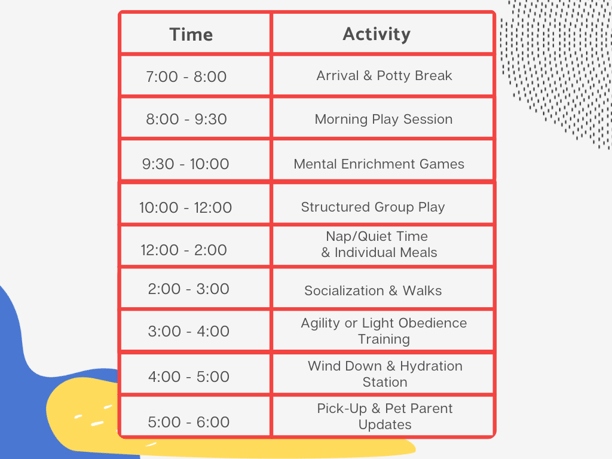
Optional Additions
- Health Checks: Brief morning or mid-day physical checks for any signs of stress or discomfort.
- Photo Time: A slot to snap pics for social or pet parent report cards.
- Quiet Zones: Space for shy or overstimulated pups to decompress as needed.
- Flex Blocks: Built-in 15-minute windows to adapt to unexpected needs or weather changes.
- Early Dinner Option: If you have extended-stay pets, puppies who eat more frequently, or if pet parents request it, you can offer a second meal or snack around 4:00 – 5:00 p.m., during the Wind Down time.
Gingr Tip: Use Your Software to Simplify Scheduling
Always collect detailed pet-care instructions during registration (Gingr’s customer portal makes this easy!). Use clearly labeled storage and feeding charts for staff, and consider adding a feeding, medication, or treat notification in pet parent report cards or updates.
With Gingr, you can:
- Set up recurring enrichment activities
- Assign staff to group or one-on-one sessions
- Track behavior trends over time
- Share daily Report Cards with photos and notes
- Enable pet parents to book enrichment add-ons during online booking
Ready to make your dog daycare the most organized, enriching, and fur-ociously fun place in town? Let Gingr help you craft the schedule that keeps tails wagging—and customers coming back.
Book a demo to learn how Gingr can simplify your schedule and help you build customers for life.
Subscribe to the Gingr Blog
